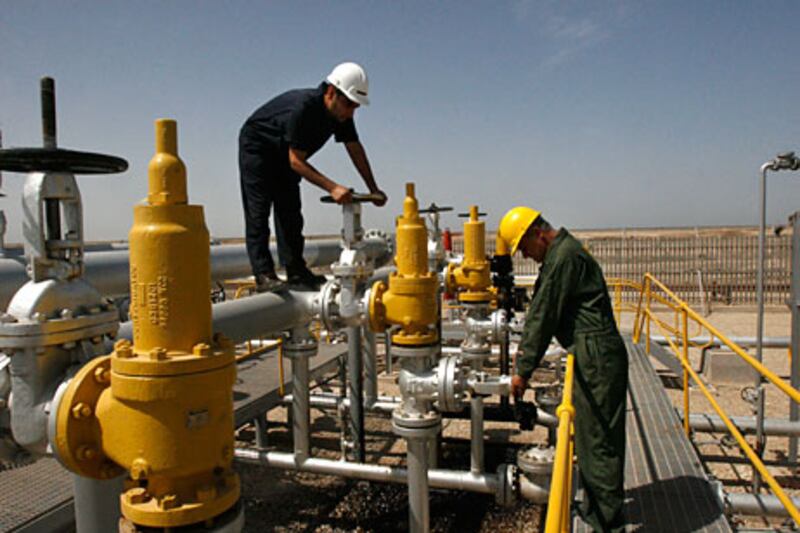Oil prices were marginally lower on Wednesday amid concerns over waning demand in China, the world’s largest crude importer, and a fall in US crude stocks.
Brent, the benchmark for two thirds of the world’s oil, was trading 0.50 per cent lower at $83.57 a barrel at 1.05pm UAE time. West Texas Intermediate, the gauge that tracks US crude, was down 0.46 per cent at $79.27 a barrel.
On Tuesday, Brent settled 0.51 per cent lower at $84.03 a barrel while WTI was down 0.60 per cent at $79.64.
“There's always been a risk of US [interest] rates remaining higher for longer, while China's recovery has been sluggish for months, as has their response to it,” said Craig Erlam, senior market analyst at Oanda.
“We need to see a significant change in the trend of the data to seriously change the outlook for crude and we haven't seen that.
“It may come over the next month or so but for now, we just appear to have seen crude move into a higher range between $80-$90,” Mr Erlam said.
US crude stocks, an indicator of fuel demand in the world’s largest economy, declined by 2.4 million barrels last week, according to the American Petroleum Institute.
Analysts polled by Reuters were expecting a draw of 2.9 million barrels.
The US Energy Information Administration’s weekly crude inventory data is due later today.
On the supply side, Iran plans to keep raising crude production amid cooling tensions with the US.
The country expects to boost production to 3.4 million barrels a day by the end of summer, from 3.2 million bpd currently, Oil Minister Javad Owji was quoted as saying by Iranian state news agency Shana.
Tehran’s oil exports have faced restrictions after the US withdrew from the 2015 nuclear agreement in 2018, which resulted in the reinstatement of economic sanctions on the Middle Eastern country.
Brent crude has gained more than 13 per cent over the past two months on Opec+ supply cuts and tightening crude inventories.
A further rise in Iran’s supply is the “key bearish risk” for the oil market amid reports of rising exports and of a potential US-Iran prisoner swap, Goldman Sachs said in a research note on Tuesday.
“China news is mixed with downside risk to [gross domestic product] from the property slump,” the investment bank said.
China’s economic recovery has lost momentum mainly due to a deepening property slump and weak consumer spending.
Last week, China’s central bank cut key policy rates for the second time in three months as industrial output and retail sales recorded slower growth in July.
Goldman Sachs, which has estimated global oil stocks at more than 9 billion barrels, said the risk of “persistently” higher-than-expected inventories has eased.
“Recent risk developments to our constructive oil call have been bullish to mixed. The recent draws, and the possibility of lower-for-longer Opec+ supply given Saudi’s reiterated commitment to cuts are bullish,” the bank said.
Goldman Sachs expects Brent crude to trade at $86 a barrel by December this year before increasing to $93 by the end of 2024.






